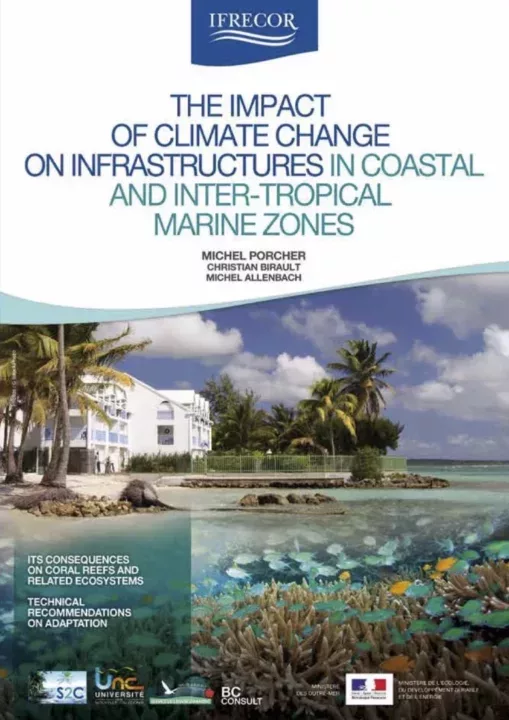Rising sea level, the increasing occurrence of extreme weather conditions, increasing air and water temperatures and acidification of the oceans will all have a major impact on coral formations and their marine ecosystems including a direct effect on the biology of the most sensitive species. They will also have an indirect impact on both individual structures and collective infrastructure located along the coast. Some structures risk deterioration and pollutants will increase in coral reefs and in their marine ecosystems). To help identify appropriate adaptation strategies when planning future developments in coastal areas, the possible impacts of climate change on each type of coastal zone development need to be analysed and the likely effects on sensitive marine areas close to the coastline need to be calculated.
Such an analysis will:
- identify potential risks to specific infrastructures and the technical measures that need to be taken to protect existing infrastructures, maintain their function and optimise future developments;
- if the right measures are taken, the impact of any damage on sensitive natural environments can be reduced and the environmental resilience to the effects of climate change enhanced.
This methodological guide is designed to inform different actors of the risks faced by the main coastal infrastructure and of the impact that deteriorating infrastructure could have on the coral ecosystem. We do not claim to be exhaustive or to answer all possible questions.
The guide contains:
- a state-of-the-art review of climate change and its consequences for the land-sea interface (GIEC 2014) in French Overseas territories in inter-tropical zones;
- an analysis of the main infrastructure offshore and infrastructure directly linked to activities along the coast whose deterioration could have an impact on coral reef environments and related ecosystems.
For each type of infrastructure, the guide provides:
- an intentionally simplified description of the structures and of the impacts they may have on the natural environment;
- an inventory of structures in each French overseas territory and overseas collectivity;
- a description of possible impacts of climate change on infrastructure and their implications for coral reef environments and their marine ecosystems;
- technical recommendations on how to adapt existing infrastructure to climate change or on the construction of new infrastructure.
As most of the infrastructure is directly affected by water, including its management and the structures built to protect it against the impact of floods and flooding, a chapter is dedicated to these aspects.
In the conclusion, we present a matrix table containing our recommendations for structures that may be the most affected by these hazards.
This summary underlines the high risk of damage to existing infrastructure and the consequences for coral reef environments and related marine ecosystems. It is crucial to implement the necessary measures to limit such risks as rapidly as possible.
Other tables are included in this guide to help decision making, they are based on diagnoses of exisiting infrastructure and list the alterations we recommend to adapt to climate change (for example items to be incorporated in a diagnostic survey).
Technical investigations conducted in a French overseas territory will enable the development of a strategy and subsequently preparation of a Climate Change Adaptation Plan for specific infrastructures, based on the following measures:
- defining priority actions;
- prioritising actions and estimating construction costs;
- drawing up a schedule for implementation;
- Setting up a local group to monitor the action plan and the technical and scientific aspects, in collaboration with the appropriate central technical departments, especially monitoring climate evolution parameters and analysing feedback from extreme weather conditions).
At the same time, it is important to:
- check that the effects of climate change have been taken into account in existing plans and development plans concerning structures in each territory;
- conduct awareness raising campaigns with local populations on the possible impacts of climate change;
- reinforce climate change observatories to optimise adaptation based on ongoing climate change;
- create a policy to ensure climate risks are taken into account, using a project quality approach. These risks must be included in Schemes Organizing Quality Assurance Plans (SOPAC), and subsequently in QAPs (Quality Assurance Plans).
